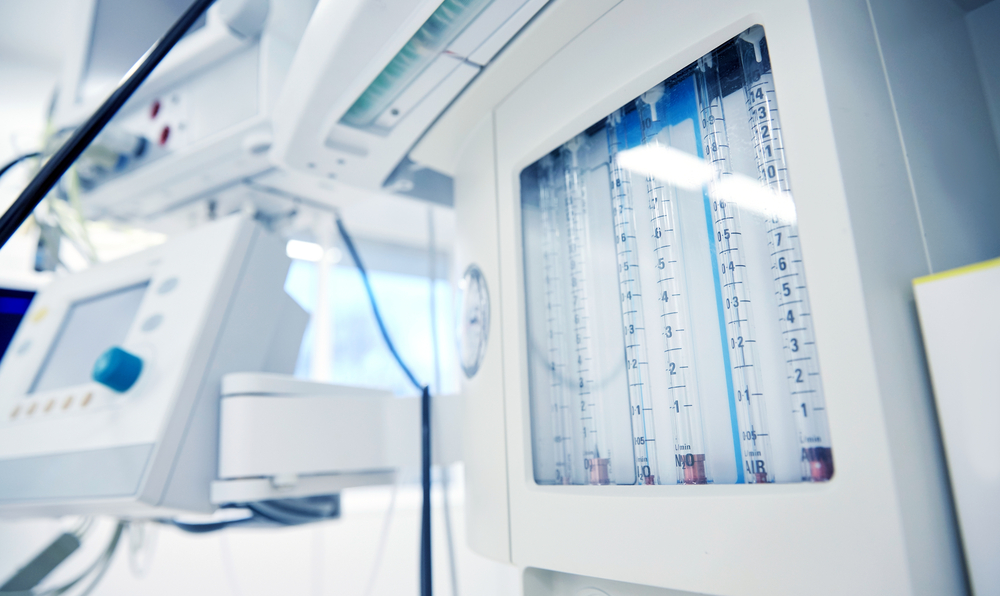
Study findings were detailed in the article “Will Real-Time Monitoring Technology be a Game Changer for Perfusion Safety?” published in the June 2017 edition of the Journal of ExtraCorporeal Technology.
CLINICAL ISSUE
Most hospitals have adopted an electronic medical record (EMR) and, since 2014, have been able to earn money from the government by demonstrating its use to improve care quality. Among these efforts have been real-time monitoring and alert systems for acute care settings where a patient’s condition can quickly change, such as the operating room (OR), intensive care unit and emergency room.
For patients undergoing cardiac surgery, one critical period is when a cardiopulmonary bypass pump takes over the function of their heart and lungs. Perfusionists—the medical specialists who operate the heart-lung machine—closely watch clinical values and take immediate corrective action if any are trending in the wrong direction.
But they’re typically doing it without the advantage of real-time monitoring technology embedded in a perfusion-specific record. More often, perfusionists rely on information that is part of an anesthesia record or a scanned copy of a paper document.
Linda B. Mongero, CCP, on behalf of SpecialtyCare in Nashville, Tennessee, conducted a literature review to assess the impact of real-time monitoring technologies on patient safety, and the capabilities and limitations of the options currently available to perfusionists.
STUDY DESIGN
The researcher examined peer-reviewed papers published through 2016 that looked at the performance of real-time data acquisition and clinical alert systems. She also communicated personally with sales force representatives of Epic Systems Corporation, which holds medical records for 54 percent of all patients in the U.S.
KEY FINDINGS
Real-time monitoring is a game-changer for perfusion safety and improving patient care. Ideally, information is presented to perfusionists from multiple monitors. When incorporated into a perfusion medical record, real-time alerts and alarms can provide tangible evidence of shortened response time.
Technology currently available to perfusionists include JOCAP, a data management system for heart-lung machines first developed in 2008 that connects to a hospital’s information system via the Ethernet or a USB port. Sorin’s LivaNova Group later came out with Connect, a real-time perfusion charting system whose newer features include statistical tools for practice improvement programs and goal-directed therapy. Other options are Terumo TLink, which easily transfers case data to hospital information systems, and Perfusion.com, offering an electronic medical record for the OR that is compatible with OnCloud perfusion software. Newer to the perfusion world is Capsule Tech, an all-in-one device that theoretically could be used to create a perfusion EMR.
Aside from cost of the technology, key roadblocks to adoption include the absence of decision support that rewards and facilitates better patient outcomes downstream.
Many hospitals are beginning to buy Epic software for physiological monitoring of patients in the OR, and the device integrates with the anesthesia record. The company currently does not offer support for a perfusion record nor recognize perfusion-specific encounters. Perfusionists can’t document patients’ vitals and need to ask anesthesiologists to edit any mistakes.
The most advanced, real-time record-keeping system on the market is Spectrum Medical’s Viper connectivity solution that collects data from all physiological and ancillary devices in the OR. Perfusionists immediately receive a compliance alert if anything is out of range.
EXISTING EVIDENCE
Potential benefits of real-time monitoring have been well documented. Using near-infrared spectroscopy, cerebral blood flow can be continuously monitored during cardiopulmonary bypass to prevent it from reaching a dangerously low level. A meta-analysis of clinical trials found an association between real-time continuous glucose monitoring and a significant reduction in blood sugar levels in type I diabetics when compared to self-monitoring. Similarly, continuous blood gas monitoring of bypass patients was also shown to help keep the acidity and carbon dioxide levels in their blood in a healthier range.
Real-time monitoring technology, and its human users, can be barriers to effectiveness. One anesthesia record-keeping system suffered from data transmission interruptions whenever a medication window was open. With another system used during cardiopulmonary bypass, important alarms were going off on an anesthesia monitor, and anesthesiologists frequently forgot to reactivate the monitor alarm for subsequent cases. Switching to another system that notified anesthesiologists to turn back on the alarm, and educating them to do so, increased the reactivation rate from 22 percent to 83 percent.
Researchers at Mass General reported that they have used information systems to send real-time alerts and reminders to clinicians. One paper reported on incorporating a perfusion record into Epic’s anesthesia module but using a timestamp rather than full continuous real-time monitoring.
A study looking at Spectrum Medical’s Viper found that perfusionists receiving compliance alerts from the solution, compared to those blinded to the information, saw their average reaction time decrease from 30 seconds to 4 seconds—and the reaction time benefit was statistically significant across five different alert types.
CLINICAL EXCELLENCE IN PRACTICE
Perfusionists exposed to real-time alerts and alarms—particularly if the information is displayed on multiple monitors—will more immediately respond to clinical issues, thereby improving patient care. Evidence supports investment in and advocacy for real-time monitoring capabilities from the standpoint of patient safety. A good next step might be formal recommendation by professional societies for use of a perfusion EMR incorporating such capabilities.
Real-time monitoring is also beneficial during clinician handoffs. An electronic checklist could be used to ensure no important detail about a case gets overlooked, an inherent risk when perfusionists have only paper-based documents available for reference.
THE RESEARCHER
Linda B. Mongero, CCP, is part of the medical department at SpecialtyCare, established to maintain a quality-first focus on all clinical matters at the organization. The group routinely publishes in peer-reviewed journals.
Comments are closed.